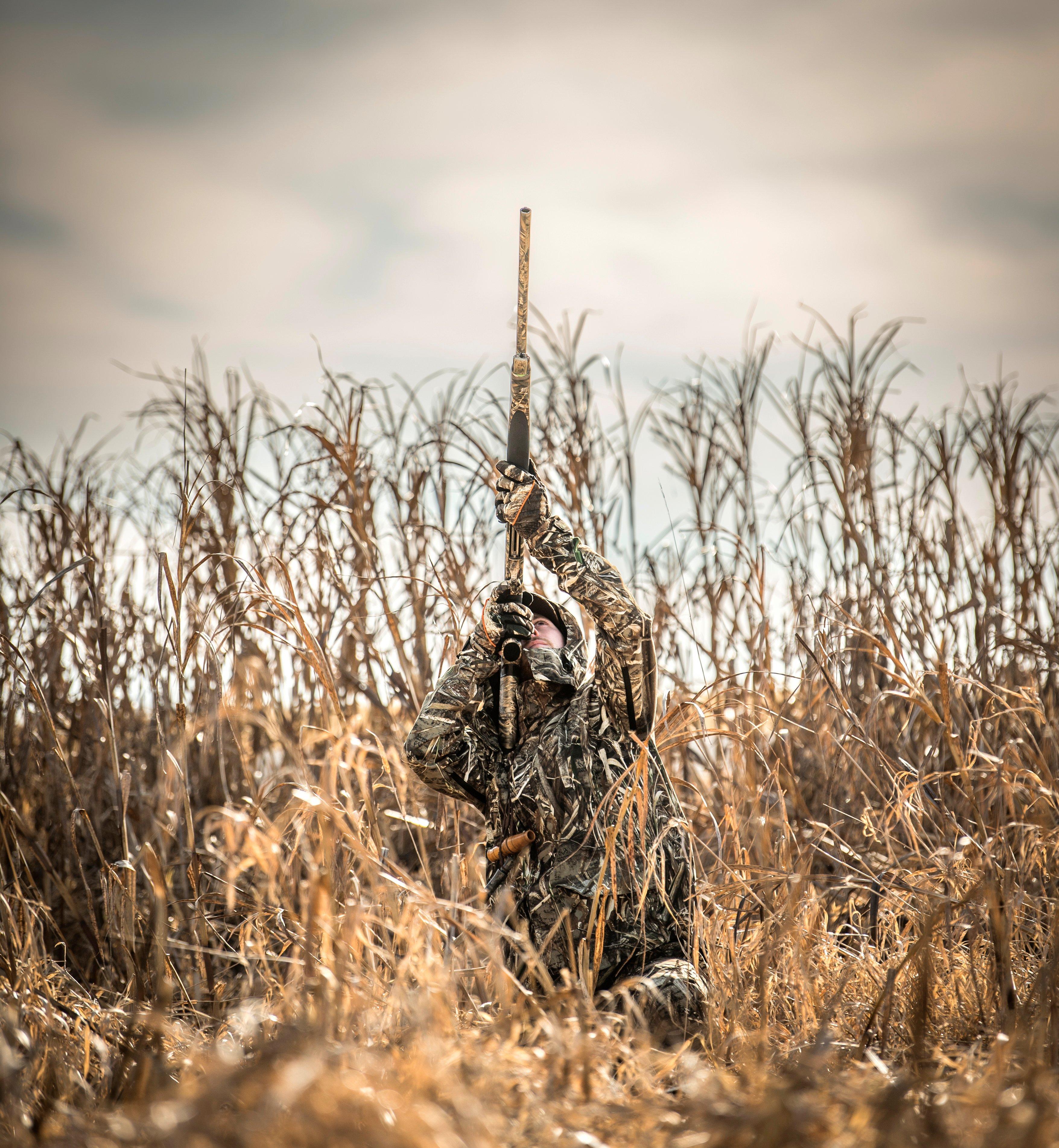And advice on how to turn those whiffs into birds on the strap

Subtle considerations can turn even the easiest duck hunting shots into three-and-outs. Photo by Bill Konway
I could list the types of shots I’ve missed while duck hunting the past 45 years, but the Internet probably doesn’t have enough space.
Still, some common shots stick out as particularly troubling or irritating, and I seem to blow a few of them almost every season. You might, too. And if you’re like me, you probably won’t mind some friendly layperson’s advice on how to avoid these embarrassing whiffs.
THE HARD CROSSER
Let’s start with a common pesky target: the seemingly supersonic crossing bird at moderate to long range. This is difficult enough when standing with your feet in good position. Throw in an extra degree of difficulty if you’re sitting while in a layout blind or boat.
Of course, 99.9% of missed crossers occur because the gunner shoots behind the bird, usually because he didn’t lead the target sufficiently or follow through. Practice shots such as skeet Station 4 help build your chops for this shot. In the field, however, you must anticipate when to take the duck, rise and shoulder your gun smoothly, swing through the target, and keep that barrel moving after you slap the trigger. And if you blow the first shot, increase that lead for the second attempt.
Don’t Miss: Keep Your Gear Ready for Duck Season
SWITCH-A-ROO
Diver geeks know this one well: A pair of ducks banks into the wind and starts to finish over the decoys. But as their feet stretch out, the trailing bird overtakes the lead bird, and shooters quickly have to acquire a new target in their zone of fire.
Trouble occurs with this shot because hunters often start, stop, and then re-start their guns, losing visual contact with the duck they should shoot. The only cure is experience and anticipation. Keep the switch-a-roo in mind as ducks decoy, and then watch to see if birds will crisscross at the moment of truth. Focus hard and swing through on that target.
SPRINGING TEAL
This isn’t just a frustrating sporting clays target. It’s a real thing — especially after an errant first shot at zipping teal sends them rocketing toward the stratosphere.
Really, this vertical target isn’t much different than a crossing shot. Swing aggressively through the bird, and continue moving your gun. Resist the temptation to cover up the bird with your barrel, as this can make you stop your gun. Also avoid anticipating the apex of a bird’s flight and simply shooting there. Trust me, it doesn’t work. Move that gun.
OVER-THE-SHOULDER, GOING AWAY
You’ll often see this shot with passing geese or skittish ducks that slip in from upwind to check out your spread. It shouldn’t be that difficult, but we sometimes make it tough on ourselves.
First, many such birds take you by surprise, and it’s easy to rush the shot. However, you must acquire the target and get on it fairly quickly before it sails out of range. And when you raise your gun swiftly to meet a departing target, you often shoot over it.
Solutions? Take your time, bore a hole in that target with your eyes, and swing your gun naturally to and through the bird. And if you miss and the duck continues out of range, have the sense to avoid an ill-advised second shot.
THE HIGH MALLARD
Most duck hunters are pretty good at this classic waterfowling shot. It’s all about foot position, shifting your weight as you swing and, again, swinging through that moving target. That’s not tough to do on solid ground. But when you’re in a rocking skiff, creaky blind, or ankle-deep in muck, your balance and ability to move are impeded.
Troubleshoot shooting conditions beforehand. If you know you’ll have a limited window of movement or worry that you might lose your balance, time shots accordingly by taking birds as they approach instead of directly overhead. Focus intently on moving your gun and executing a solid first shot before your balance or footing get shaky.
Don’t Miss: Bird Flu Cases Down, Duck Numbers Up in NoDak, and More Waterfowl News
FLARE-IN-THE-WIND-DILEMMA
When the wind howls, ducks and geese often approach low and hover over the spread for what seems like forever. That’s cool but troublesome. When hunters rise to shoot, birds simply flick their wings, catch the breeze and end up 15 yards farther downwind — often at the edge of range or too far — before gunners can fire.
Solve this problem before it occurs. During high-wind days, set your boat or blinds perpendicular to the spread. That way, spooky ducks and geese are looking only at the decoys, not your hide. And cheat your blinds or boat toward the downwind edge of the spread. That way, when birds smell a booger and flare, they should still be in solid range.
THE EASIEST SHOT
Ever miss a candy duck decoying directly at you? You’re not alone. This simple shot goes haywire all the time because it’s so easy.
Don’t get cocky and lose concentration. Focus on those easy incomers just like you would on a smoking 40-yard crosser. Don’t neglect to follow through. And above all, do not follow the terrible advice to shoot at the feet of incomers. It’s still a moving target. Treat it as such to avoid a humiliating miss.










